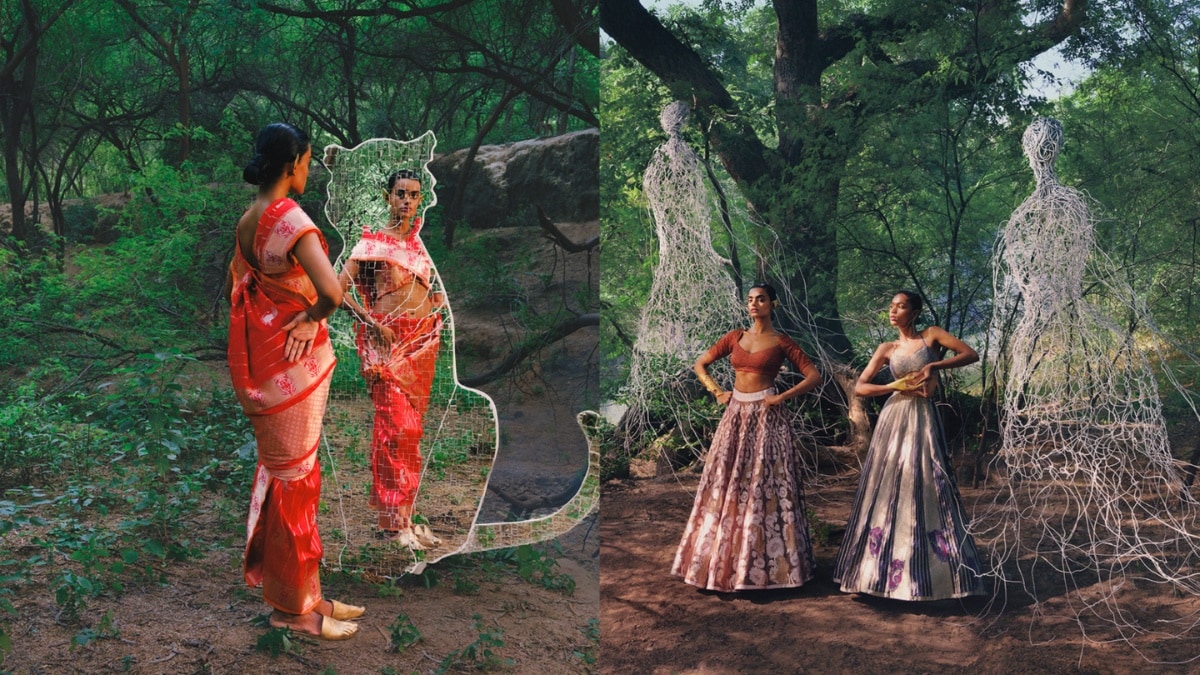With understanding comes appreciation of slow fashion and revival of weaves. Firstpost spoke to two founders, Sagrika Rai and Khushi Shah and designer Archana Jaju on revival of weaves, importance of slow fashion and the weavers of India on National Textile Day.
read more
Weaving combines vision, creativity, precision, patience, and passion. In the past, handloom weavers worked on draw looms where the design arithmetic was memorised by the artisans with only a single thread outline as their lead, which needed extraordinary skills. Although the jacquard technique has evolved and made weaving easier, it still needs clear thinking and composure with well inherited or acquired skill for the craftsmanship.
Craft
is experiencing a resurgence, with traditional textiles like Khadi and Banarasi making waves on runways. Designers are incorporating chikankari and block printing into their collections. And conscious consumers are supporting artisans, prompting brands to innovate with products. Reviving traditional weaves helps preserve cultural heritage and craftsmanship that are often intertwined with local histories and identities. Plus, traditional weaving practices often utilise eco-friendly materials and techniques, promoting sustainable production and consumption practices.
Sagrika Rai, founder,
Warp ‘n Weft
explains that each design is derived from a unique jacquard with its exclusive punched cards and can only be interpreted by master weavers with the know-how and intent to translate the complexity into treasured fabrics of India. Weaving is a labour of love. It is more than just a production house churning and selling; it’s an invaluable art form that reflects cultural heritage, pride of craftsmanship and emotion of the craftsmen.
Sagarika adds, “It’s crucial to protect the rights and ideas of craft communities and protect the well deserving economic status of their work. On the other hand, machine made textiles and power loom, enjoy the sophistication of automation with the man- force only as technicians to resolve exigencies. The production is a hundred fold faster and runs well on manmade fibres that must draw cheap prices for mass use. This does not qualify as heritage weaving.”
Banarasi sarees, with their historical and cultural significance, represent prosperity, heritage, and artistic brilliance in Indian tradition. Evolving with societal preferences while retaining their essence, Katan Banarasi Silk stands out for its pure silk and exquisite craftsmanship, reflecting unparalleled quality. Similarly, Chiffon, known for its lightweight and flowing texture, crafted from silk or synthetic fibres, exudes elegance and charm, particularly in formal wear. Banarasi chiffon sarees embody a blend of artistry and cultural heritage, continuing to evolve with contemporary influences while maintaining their timeless appeal.
Talking about textiles, Khushi Shah, Creative Director Shanti Banaras says, “At Shanti Banaras, we work with a range of traditional textiles, including Banarasi silk, brocade, and georgette. We also explore variations like organza, chiffon, and tussar silk, all meticulously crafted using age-old techniques passed down through generations. Each textile carries the rich heritage of Banaras, blending intricate patterns, vibrant colours, and luxurious textures to create timeless pieces cherished by connoisseurs of fine craftsmanship.”
Archana Jaju who works on tussar silk, paithani silk, chanderi, mulbery silk, hand spun cotton, to name a few believes that revival and preserving our ancient art is important to us as it defines our history and culture, our decades old customs of handloom sarees are still worn on special occasions and day to day wear as well.
A strong beliver of slow fashion, Archana Says, “For me slow fashion is understanding the importance of handloom textile and artisanal product. To gain knowledge about the craft, techniques, and the artisanal community behind design and development of individual product. With understanding comes appreciation for slow fashion.”
It is very important to pay tribute to the community as they are skilled artisans carrying on traditions, art, and culture. They are not only doing their job, but they are creating master art which is symbolic. Talking about slow fashion, Khushi Shah says, “Fashion is one of the most polluting industries in the world — but it can be used as a gateway for empowerment. For women, artisans and the weavers. Slow fashion is the only fashion that should matter in 2024!”

